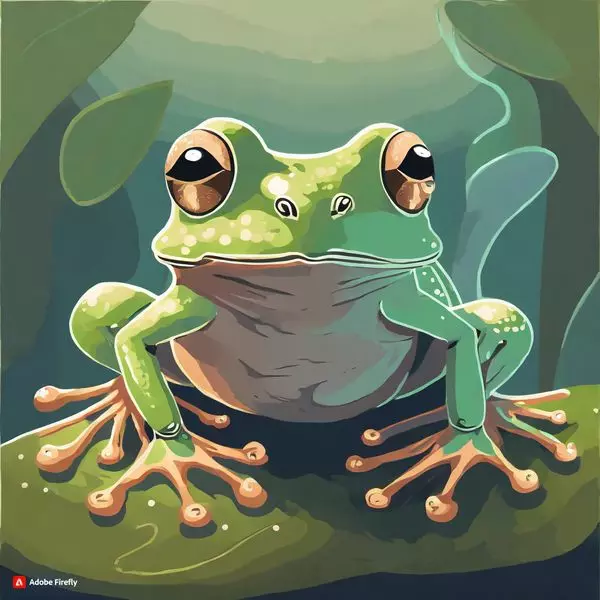In a significant discovery, scientists have identified a new species of ‘music frog’ in the northeastern state of Arunachal Pradesh. The findings, based on morphological, molecular, and acoustic evidence, were published in the November 15 edition of the journal Zootaxa.
Researchers Bitupan Boruah, V Deepak, and Abhijit Das conducted field surveys in the Changlang and Lohit districts of Arunachal Pradesh between August and September of the previous year. The newly discovered frog, belonging to the genus Nidirana, is described as phenotypically distinct from its congeners, showcasing unique morphological characteristics.
The scientists encountered male frogs with ‘robust’ bodies calling loudly, nestled within vegetation in shallow pools of water. Additional specimens were observed in nearby marshy areas, the edges of a recently constructed pond, and along the side of a nearby road.
Collecting a total of five specimens, three males and two females, the researchers named the newfound species “Noa-Dihing Music Frogs” or Nidirana noadihing. The nomenclature pays homage to the Noa-Dihing River, near the location of the discovery.
Characterized by a ‘robust’ body, male frogs measure approximately 1.8 to 2.3 inches, while females range from about 2.4 to 2.6 inches in length. The frogs exhibit a ’rounded’ snout, ‘smooth’ skin with bony protrusions on their backs, and a distinct ‘pale cream’ line bordered with dark brown running down the center of their bodies. Their limbs are light brown with dark stripes.
This discovery marks the first confirmation of the Nidirana genus’s presence in India. Previously known in countries such as Japan, Taiwan, China, Vietnam, Laos, and Thailand, the Noa-Dihing Music Frogs bring a novel addition to India’s amphibian biodiversity.
Noteworthy features of the newly discovered species include ‘irregular shaped and sized spots’ on their eyelids, dark stripes around their moderately large eyes, and gold-rimmed pupils. Their throats, forelimbs, thighs, and lower legs exhibit light brown and pinkish hues, while the groin and the outside of their thighs display pale yellow tones with irregular dark olive patches. The chest and belly are cream-colored with a golden tinge.
Nidorina species are known to inhabit swamps, ponds, and paddy fields, often constructing nests for egg-laying. The Noa-Dihing Music Frogs are distinguished by their size, oval toe tips, tubercles on their backs, and a unique call.
This discovery underscores the significance of exploring specialized habitats, such as marshlands, that are frequently overlooked. It also reinforces the importance of ongoing efforts to understand and document the rich biodiversity of India.
Also Read: India’s Global Leadership: Annual Conference On Development Priorities Unveiled











